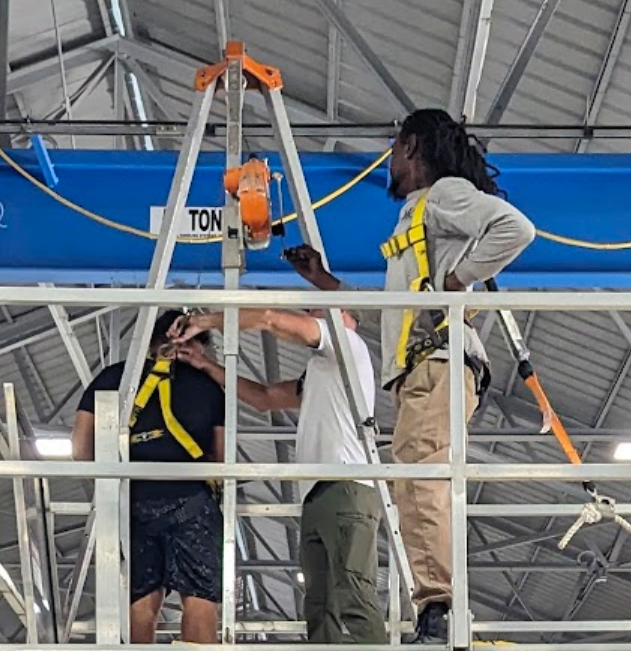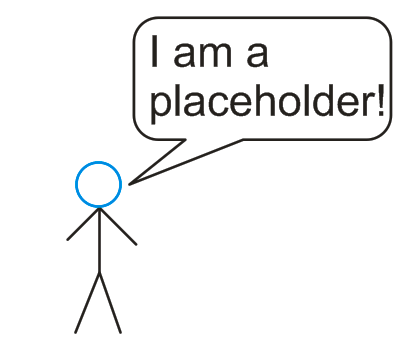Permit Required Confined Space Entry Inspections and Maintenance. Osha certified
70 of our staff are Osha trained and certified for Permit Required Confined Space Entry. We are trained by emergency rescue fire-fighters and the oganization that trains fire-fighters. The company that trained us are AOTC...Permit Required Confined Space Entry trainers at AOTC
Why are confined spaces a big deal?
There are 2 deaths a week in preventable confined space accidents in the USA.
Types of "Permit Required" confined spaces that we typically enter...
- Septic Tanks: Underground septic tank are classed as Permit Required Confined Spaces.
- Lift Stations: Also permit required.
- Manhole structures:Usually underground utility structures containing pipe, electrical, or machinery.
- Grease Traps: These smell the worst.
- Vaults / Bins
- Pits / Diked areas
- Vessels / silos
Note: we are not certified for marine confined spaces.
Why do we get in to Confined Spaces?
- Repair equipment
- Regular maintenance
- Remove blockages
- De-activate & Activate utilities
- Access for camera inspections
- Adding or removing more utilites passing through the space

Winching personnel training.
Terms used in Confined Space Entry
- PRCS - abbreviation for Permit Required Confined Space
- Sniffer - slang term for the gas detection device
- Ventilator - motorized forced air fan blower with ducting used to ventilate spaces
- Entrant - the person that will go into the PRCS
- Attendant - the person required to assist the entrant
- Supplied air - air that is forced through a hose to the entrant
- Assessment - PRCS is checked and assessed beforehand and hazards identified and a prevention action is identified.
- Lock Out Tag Out - Electrical or anything feeding the PRCS is locked and tagged with a notice to stop activation
- OSHA 1910.146 - the safety specifications for PRCS
What is a Permit Required Confined Space? (PRCS)
There are two parts to the definition, 1. "Permit required", and 2. "Confined space".
The OSHA definition says that the Permit Required space has at least one of these 4 things...
- Contains, or has the potential to contain a hazardous atmosphere
- Contains a material has the potential to engulf someone
- Has the internal configuration that might cause the entrant to be trapped or asphyxiated by walls or a converging small space
- Contains any other serious safety or health hazard
Add to that the "Confined Space" definition. All 3 of these mean there is a confined space.
- The space is large enough for someone to fully enter
- Is not designed for continuous occupancy
- Has limited entry or egress
What does the Confined Space Permit entail?
The intent of the permit is to make sure everyone is aware of the dangers, and that they have taken the necessary precautionary steps.
The permit only makes sense if you have been trained for confined spaces. And by filling out the permit fully, you go through all the steps to make your team as safe as possible
Main parts of the permit:
- Job description
- Listing the Potential hazards
- A trained person can list all the possible hazards such as
- gases, electrical shock, engulfment
- Listing the equipment required for this entry
- Any items present in item 1 may need equipment added for this list such as
- Gas detector, rescue winch, Respirator
- Emergency plan - generally a non entrance rescue plan
- The authorized personnell - minimum 2 people, usually 3
- An onsite preparation check list (what to do before going in)
- Ventilation specifics (volumes, venting time)
- Gas test results at different times
- Signoff of supervisor, and personell
How SMC does it
SMC will perform an Confined Space preliminary assessment. Once we have the information from the assessment we will create a plan for the PRCS entry.
The plan will include the inormation we need to complete the permit form and prepare the equipment required, and our ready our rescue plan resources.
Once the preliminary assessment is done, we determine if we can create a safe Permit Required Confined Space entry.
Information gathered during the assessment...
- Address (needed for permit)
- Engulfment danger assessment
- Electrical lockout data
- Atmospheric dangers
- Flammable
- Hydrogen Sulphide
- Carbon Monoxide
- Other Toxic factors
- Mechanical hazards
- Space configuration hazards
- Depth
- Other environmental factors
- The name of the onsite contact
How does the Confined Space Permit help?
The permit helps by categorizing and highlighting all the dangers, and requires the team to create a plan to address all the dangers that may be present.
Also, the trained permit users will have all the equipment and training to deal with each danger listed on the permit
The permit will highlight which safety precaution to use, for example
- Atmospheric Dangers - Gas Detector / Gas alarm / Ventilator/
- Engulfment Danger - Plug engulfment sources
- Rescue may be required - A Non Entrant Rescue Equipment and Plan is required
- Electrical present - lockout tagout protocols enforced
Fact: There have been no fatalities when Permit Requirements are met
OSHA states that there has never been a fatality when ANY one of the following is present.
- Permit
- Ventilator
- Gas Detector
